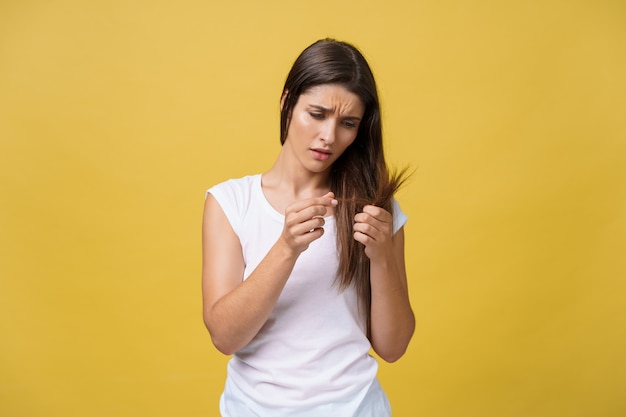
When you shave, your razor cuts the hair at an angle, leaving sharp edges. These hairs can end up growing back into the skin and cause what’s known as ingrown hairs. They can lead to redness, irritation, pain, and itching. Sometimes, hairs get trapped beneath the skin, leading to razor bumps. These issues are more common for people with coarse, curly hair because those hairs tend to grow in spirals, making it easier for them to curl back into the skin. Men, especially those with darker skin, often experience this on their face and neck. However, ingrown hairs can appear anywhere you shave, like the underarms, legs, bikini area, or pubic region.
### Why Ingrown Hairs Happen
There are several reasons you might develop ingrown hairs. These include:
– Shaving too closely
– Shaving against the natural direction of hair growth
– Using a dull razor
– Wearing tight clothing that rubs against the skin
– Waxing or plucking hair
– Having a buildup of dead skin cells
### How to Prevent Ingrown Hairs
The easiest way to avoid ingrown hairs is to stop shaving or removing hair, though that’s not always practical. If you prefer to keep shaving, here are some tips to reduce the risk:
– Use a good-quality razor with multiple blades and a pivoting head, and replace the blades regularly.
– Choose a shaving cream or gel suited to your skin type, ideally one with moisturizing ingredients like aloe vera or glycerin.
– Wash the area with a mild soap and a rough washcloth beforehand to remove dead skin and unclog pores. If you already have ingrown hairs, gently massage the area with a washcloth or soft toothbrush.
– Use warm water to rinse the area before shaving, as this softens the hair and opens up the pores.
– Apply a generous amount of shaving cream and avoid shaving dry areas. Reapply cream as needed.
– Shave in the direction your hair grows, using short, even strokes without pressing too hard. Don’t pull your skin tight or repeatedly shave over the same area.
– Rinse your razor frequently while shaving to keep the blades clean.
– After shaving, rinse the area with water and apply a soothing, alcohol-free moisturizer or aftershave. Regularly exfoliate and moisturize your skin to remove dead skin cells and keep it hydrated.
– Avoid tight clothing that might irritate the skin, and skip applying deodorant immediately after shaving your underarms, as it can cause irritation.
If shaving still causes issues, laser hair removal may be a helpful option. It can remove the hairs that typically grow back into the skin.
### How to Treat Ingrown Hairs
If you get an ingrown hair, it’s important to treat it so it doesn’t lead to complications like infections, darkening of the skin, or scarring. While rare, these complications can happen if the area isn’t cared for.
To treat an ingrown hair at home, you can try:
– **Exfoliation**: Exfoliate gently using a scrub, exfoliating glove, or soft-bristled brush to release trapped hairs and reduce inflammation.
– **Moisturizer**: Apply a fragrance-free moisturizer formulated for sensitive skin twice a day to soothe the area.
– **Warm Compresses**: Place a cloth soaked in warm water on the affected area for a few minutes, three times a day.
– **Tea Tree Oil**: This can help reduce redness and irritation.
– **Aloe Vera Gel**: Apply a thin layer, allow it to dry, then rinse with warm water.
Most cases can be managed at home. However, if the ingrown hair becomes very painful, swollen, or shows signs of infection (like pus or drainage), it’s best to see a healthcare provider or dermatologist. They may recommend treatments such as:
– Prescribed antibiotics
– Over-the-counter 1% hydrocortisone cream
– Benzoyl peroxide
– Tretinoin or alpha hydroxy acids to help with healing
### Managing Razor Bumps
Razor bumps, while not the same as ingrown hairs, are another possible side effect of shaving. They appear as clusters of small red or pink bumps that might itch or feel uncomfortable. In more severe cases, they can be filled with pus.
Here’s how to care for razor bumps:
– Use over-the-counter creams or lotions with salicylic or glycolic acid to exfoliate and soothe the skin.
– Apply warm compresses to reduce discomfort.
– Moisturize to prevent the area from drying out and promote healing.
It’s a good idea to take a break from shaving the affected area until the bumps heal. If they don’t get better or are causing discomfort, consult a healthcare provider or dermatologist for further guidance.
### Final Thoughts
Ingrown hairs happen when a shaved hair curls back into the skin, and they are more common in people with coarse, curly hair. Proper shaving techniques and skin care can help you prevent them. If you do get an ingrown hair, most of the time you can manage it at home. However, if it doesn’t improve or you’re concerned, don’t hesitate to consult a healthcare professional.